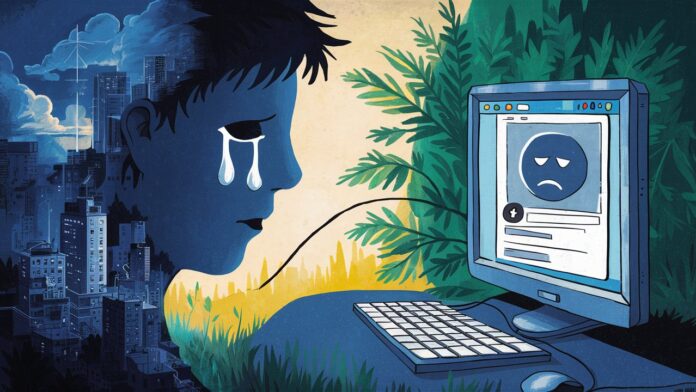Introduction: The Unspoken Language of Profile Pictures
In the digital age, profile pictures have evolved beyond mere avatars—they are windows into our emotions, identities, and unspoken struggles. A sad profile picture often serves as a subtle yet powerful signal, reflecting inner turmoil, loneliness, or a desire for empathy. While some dismiss it as a fleeting trend, others recognize it as a modern form of emotional expression. This article delves into the psychology behind sad profile pictures, their societal implications, and how they influence interpersonal dynamics. By exploring cultural nuances, gender differences, and strategies for compassionate responses, we aim to decode this silent cry for connection.
1. The Psychology Behind a Sad Profile Picture
A sad profile picture is rarely arbitrary. Psychologists suggest such choices often stem from a need for self-expression or emotional validation. Individuals may subconsciously (or consciously) select images that mirror their internal state, using visual cues to communicate feelings they struggle to articulate. For instance, a dimly lit selfie, a tear-streaked face, or a desolate landscape can symbolize grief, depression, or existential angst.
Research indicates that people experiencing social isolation or mental health challenges are more likely to adopt melancholic visuals. This act can serve as a cry for help or a way to signal vulnerability without direct confrontation. However, it can also reflect a self-fulfilling prophecy, where the individual reinforces their sadness by surrounding themselves with imagery that mirrors their emotional state.
2. The Impact of a Sad Profile Picture on Social Interactions
A sad profile picture doesn’t exist in a vacuum—it shapes how others perceive and interact with the individual. On social media platforms, where positivity is often curated, a somber image can evoke empathy or alienation. Friends might reach out with concern, while strangers may misinterpret it as attention-seeking or melodrama.
In professional contexts, a sad profile picture can inadvertently harm perceptions of competence or reliability. Employers or clients might question the individual’s emotional stability, highlighting the tension between personal expression and societal expectations. Conversely, in supportive communities, such imagery can foster solidarity, encouraging others to share their struggles openly.
3. Cultural and Gender Differences in Expressing Sadness Online
Cultural norms heavily influence how sadness is displayed and interpreted. In collectivist societies, where emotional restraint is valued, a sad profile picture might be seen as taboo or overly revealing. Conversely, individualistic cultures may view it as a brave act of authenticity. Gender also plays a role: women are often socially permitted to express sadness more openly, while men face stigma for deviating from stereotypes of stoicism.
For example, a study found that women are 30% more likely to use melancholic visuals in profiles, whereas men may resort to abstract symbols (e.g., stormy skies) to convey sadness indirectly. Recognizing these nuances is key to avoiding misinterpretation and fostering inclusive digital spaces.
4. Addressing the Silent Cry: How to Respond Compassionately
When encountering a sad profile picture, empathy should guide our response. Instead of invasive questions or dismissive remarks, a simple message like, “I noticed your photo—how are you feeling?” can open a supportive dialogue. However, respecting boundaries is crucial; not everyone is ready to discuss their emotions openly.
Encouraging professional help, promoting mental health resources, or sharing relatable experiences can also make a difference. Social media platforms themselves bear responsibility by integrating features like anonymous wellness check-ins or mood-based content filters to support users in distress.
Conclusion: Beyond the Pixel—A Call for Empathy
A sad profile picture is more than a digital artifact—it’s a reflection of the complex interplay between emotion, identity, and technology. By understanding its psychological roots and societal impact, we can move beyond superficial judgments and foster meaningful connections. In a world where loneliness is pervasive, these silent signals remind us to look closer, listen deeper, and respond with kindness.
Frequently Asked Questions (FAQs)
Q1: Why do people use sad profile pictures?
A: They may seek emotional validation, express unresolved grief, or signal a need for support without direct communication.
Q2: Should I confront someone about their sad profile picture?
A: Approach gently—express concern without pressure. Example: “Your photo stood out to me. I’m here if you want to talk.”
Q3: Do cultural differences affect how sadness is perceived online?
A: Yes. In some cultures, public displays of sadness are discouraged, while others view them as authentic and brave.
Q4: Can a sad profile picture impact professional opportunities?
A: Potentially. Employers may misinterpret it as instability. Consider tailoring profile visuals to context (e.g., LinkedIn vs. personal accounts).
Q5: Are sad profile pictures linked to mental health issues?
A: Not always, but they can be a red flag. Persistent use alongside other signs (e.g., social withdrawal) may warrant concern.
Q6: How can social media platforms better support users with sad profile pictures?
A: By offering mental health resources, anonymous support options, and fostering communities that destigmatize vulnerability.
By engaging with these questions and insights, we move closer to a digital world where every pixel tells a story—and every story is met with compassion.


